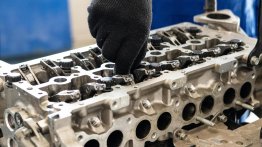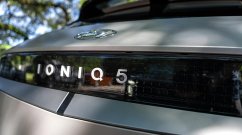As the monsoon season approaches, it’s crucial to prepare your car to handle the challenges that come with heavy rains and flooded roads. Ensuring your vehicle is in top condition not only enhances safety but also prevents costly repairs. Here’s a comprehensive guide to getting your car monsoon-ready.
Photo by imaad whd on Unsplash
1. Check Your Tires
Tires are your car’s only contact with the road, making them critical for safe driving in wet conditions. Here’s what to do:
- Tread Depth: Ensure your tires have sufficient tread depth (at least 2mm). Worn-out tires increase the risk of hydroplaning.
- Tire Pressure: Check and maintain proper tire pressure. Under-inflated tires can reduce grip and increase braking distance on wet roads.
- Alignment and Balance: Misaligned or unbalanced tires can cause uneven wear and affect handling, especially on slippery surfaces.
2. Inspect the Brakes
Your car’s braking system is paramount for safety during the monsoon:
- Brake Pads and Discs: Inspect for wear and tear. Replace them if they are worn out.
- Brake Fluid: Ensure the brake fluid is at the correct level and not contaminated. Old brake fluid can absorb moisture, reducing braking efficiency.
3. Check the Wipers and Windshield
Clear visibility is essential during heavy rains:
- Wiper Blades: Replace old or cracked wiper blades. They should effectively clear water without leaving streaks.
- Windshield: Ensure your windshield is free from cracks or chips. Consider applying a water-repellent treatment for better visibility.
- Washer Fluid: Fill the windshield washer reservoir with a good-quality washer fluid. It helps in cleaning the windshield and improving visibility.
4. Examine the Electrical System
Rainwater can wreak havoc on your car’s electrical components:
- Battery: Check the battery terminals for corrosion and ensure the battery is charged. A weak battery can leave you stranded.
- Lights: Ensure all exterior and interior lights are working properly. Replace any burnt-out bulbs. Check the headlights, taillights, brake lights, and indicators.
- Fuses and Wiring: Inspect for any exposed or damaged wiring that could short circuit in wet conditions.
5. Protect the Exterior
Preventing rust and maintaining your car’s exterior is crucial:
- Waxing: Apply a good coat of wax to protect the paint from water damage.
- Underbody Coating: Consider an anti-rust underbody coating to protect against rust and corrosion.
- Seals and Weatherstrips: Check the rubber seals around doors and windows. Replace any damaged seals to prevent water ingress.
6. Drive Safely
Lastly, adjusting your driving habits during the monsoon is crucial:
- Speed: Drive at a moderate speed to avoid skidding. Wet roads reduce tire traction
- Distance: Maintain a safe distance from the vehicle ahead. Braking distances increase on wet surfaces.
- Avoid Puddles: Avoid driving through standing water. It can cause hydroplaning and hide potholes or debris.
Conclusion
Preparing your car for the monsoon involves a thorough check of critical components and adopting safe driving practices. Regular maintenance and vigilance can ensure your vehicle handles the rainy season safely, keeping you and your passengers secure on the road. By following these steps, you can enjoy the monsoon without the worry of car troubles.






















